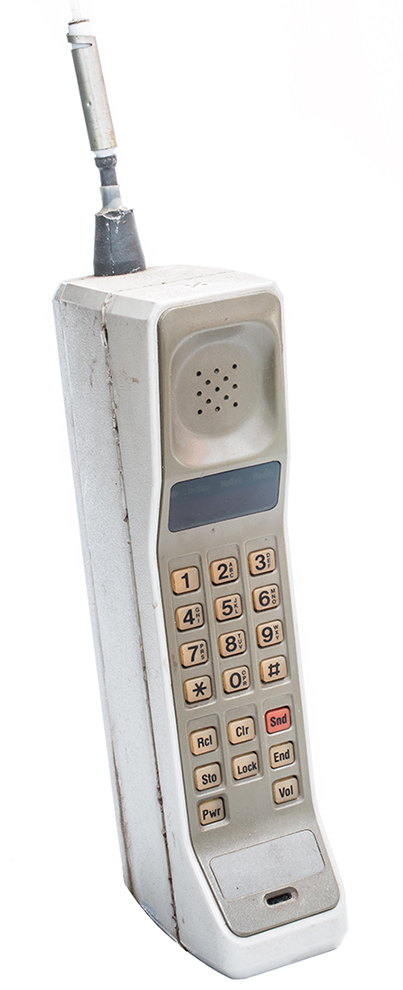The Evolution of Mobile Computing
If you list inventions that have made the biggest impact on society, from the automobile to airplanes to television and the telephone, the cell phone may (and likely will) eventually top the list. It is important to note that the cell phone has gone from a heavy cumbersome device, as shown in FIGURE 14-1, to a small handheld device with more than 1-billion users in less than 40 years. Today, most phones are considered “smartphones,” which mean they integrate computing capabilities and often a web browser, allowing the phones to provide a wide range of solutions. Beyond traditional phone calls, smartphones also have the following uses:
-
Browse sites on the web, which includes Google, Facebook, and more.
-
Place-face-to-face video calls to phones and computers.
-
Perform GPS-based navigational operations and other location-aware solutions.
-
Exchange text messages with other users.
-
Perform e-commerce operations.
-
Run a myriad of applications (apps).

FIGURE 14-1 In less than 40 years, the cell phone went from a cumbersome device to a handheld one in use worldwide.
© Thawornnurak/Shutterstock.
Understanding the G in 4G and 5G
When you discuss phone capabilities, you will hear terms such as 4G or 5G. In the simplest since, the G stands for generation. A 4G phone, therefore, is a fourth-generation phone. Although there are standards with respect to the potential speeds associated with each generation, the speed of most devices today will depend upon location (some cities support faster speeds), the provider network, whether you are moving or stationary, as well as the phone technology. TABLE 14-1 briefly describes the key generational attributes.
TABLE 14-1 The common generations of cell phones.
| Generation | Capability |
|---|---|
| 1G | First-generation phones supported analog communication. |
| 2G | Second-generation phones introduced digital communication. |
| 3G | Third-generation phones supported faster speeds which, in turn, made web browsing and email solutions readily available. |
| 4G | Fourth-generation phones support near Wi-Fi speed, which enables rich media and video streaming. |
| 5G | Fifth-generation phones support much faster data rates—up to 20 gigabits per second, which is faster than most cable-based Internet systems. Most real-world 5G systems today provide close to 1Gbs. |
